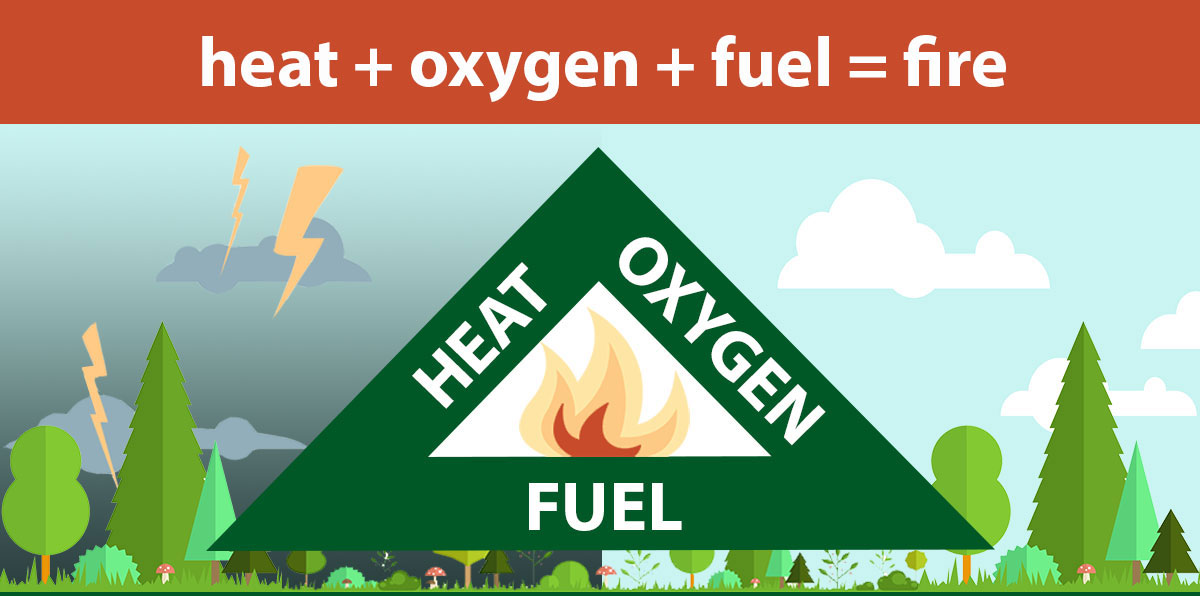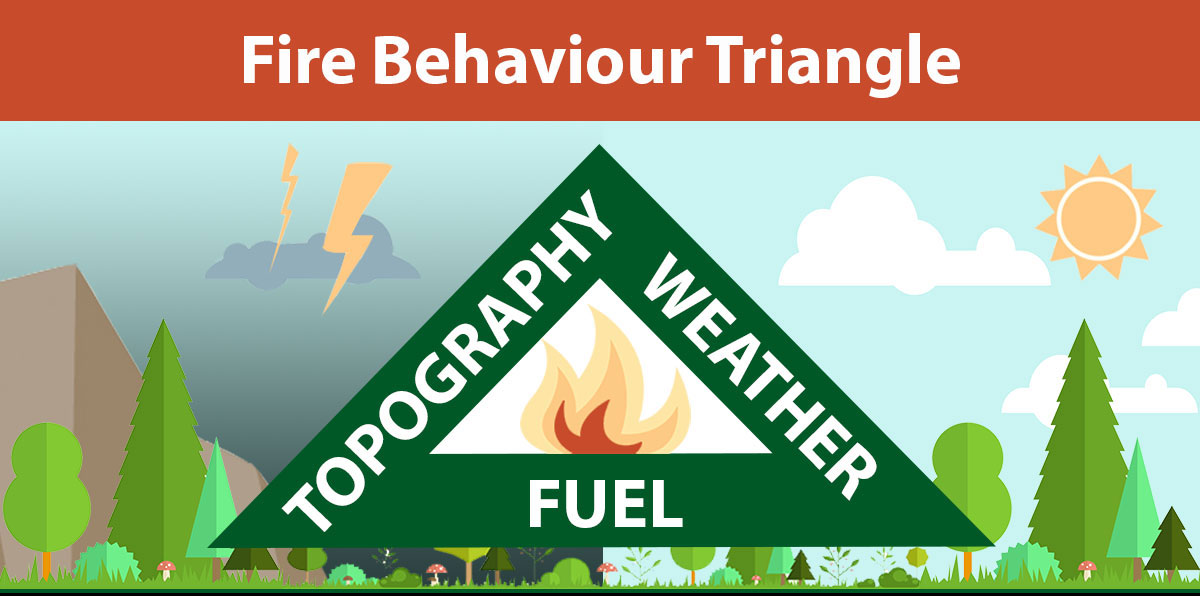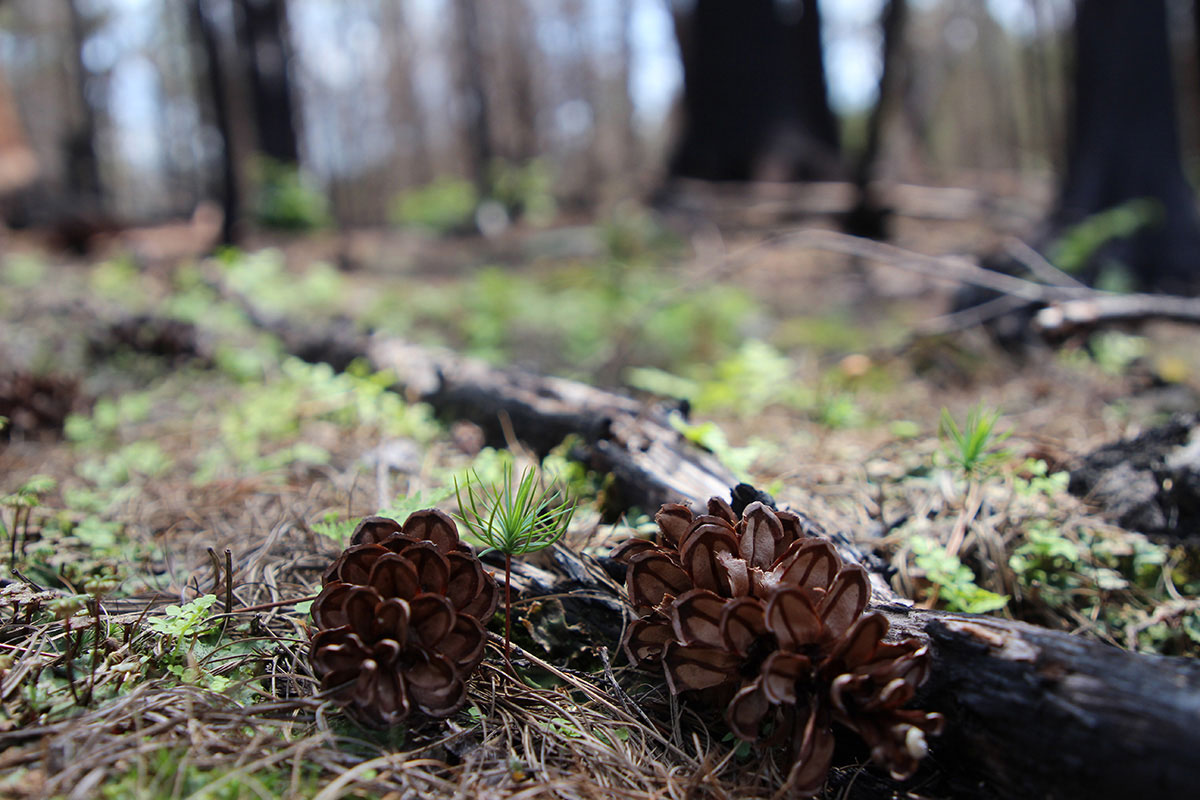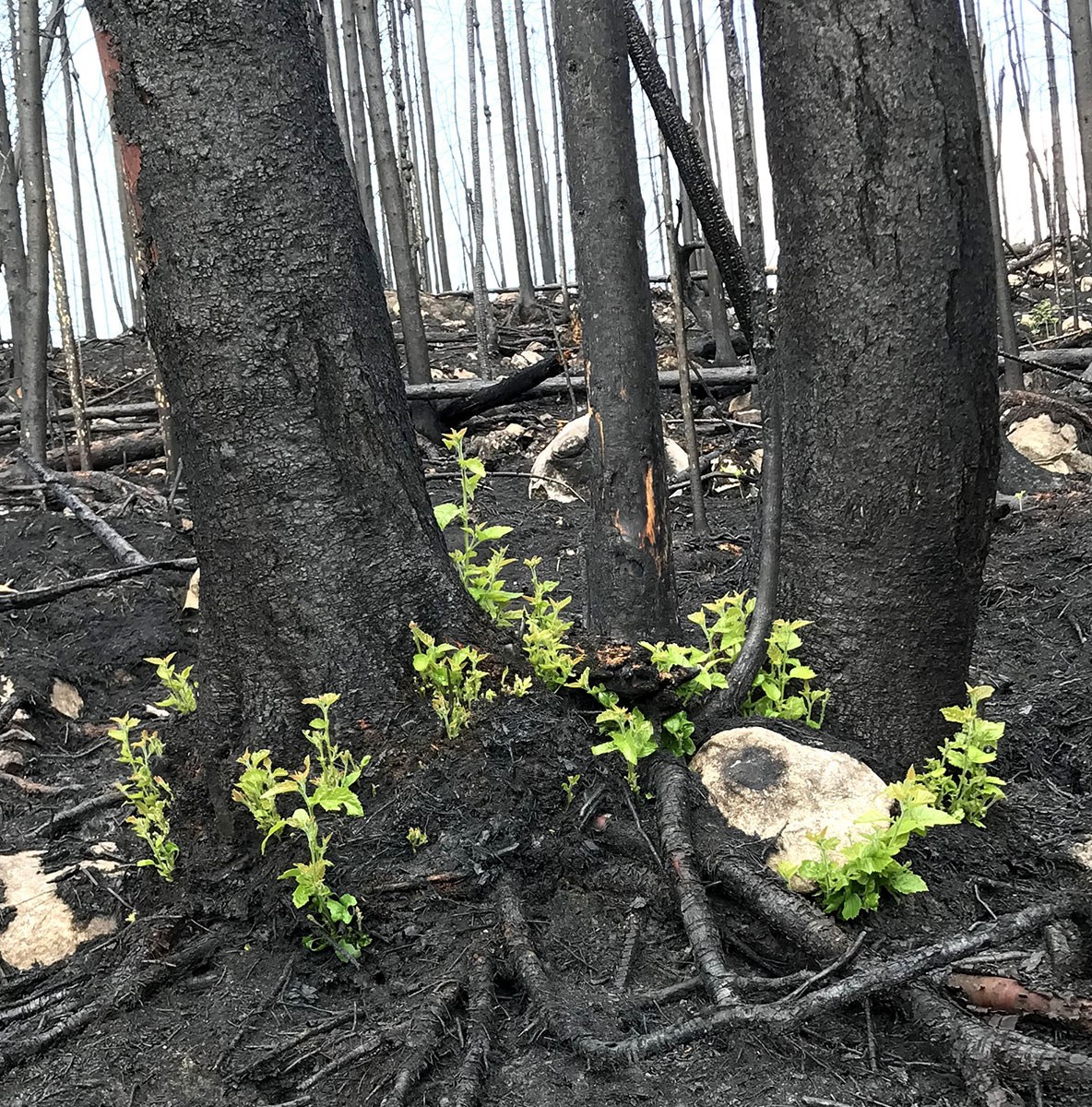Wildland fire behaviour
Learn how wildland fires start and grow, and how you can help prevent human-caused fires and reduce the impact of occurring fires.
Overview
Fire science is the study of how a fire behaves in our natural wildlands.
With a better understanding of fire behaviour, fire managers identify opportunities to use fire as an ecological process that can maintain biodiversity and restore fire dependent ecosystems.
Managers must also consider social and economic impacts protecting assets and resources, such as cottages and wildlife. Using our knowledge of fire science and behaviour, we can better understand how to balance the natural role of wildland fires while protecting Ontario’s resources.
Wildland fire
A wildland fire is any fire burning in a:
- forest
- grassland
- alpine tundra vegetation area
The fire triangle
For a fire to start, three components must be present: heat, fuel and oxygen. Together, they are referred to as the fire triangle

- Heat is the spark or heat source that brings fuel to its ignition temperature. It can be caused by people, such as lighting a match, or from natural causes such as lightning strikes.
- Fuels are the vegetation, such as trees, dead leaves and twigs on the ground, and other combustible materials that can burn.
- Oxygen is a component of the air necessary for combustion.
All three components must be present before a fire can start and continue to burn. If only one or two of these components are present, it is impossible to start a fire.
Breaking the fire triangle
To control or extinguish a fire, one or more of the fire triangle components must be removed. Successful fire suppression –containing or putting out the fire—occurs when the fire triangle is broken by removing either heat, fuel or oxygen.
To remove one of the components and break the triangle:
- cool the fire with water, which removes heat
- smother the burning materials with soil or water, which removes oxygen
- remove access to available fuel sources by:
- separating unburned fuel from the burning materials along a fire’s edge
- establishing a fireguard, or border area of cleared and burned out fuel, away from the fire’s edge
- applying water, foam or retardant to unburned fuels making them less combustible
The fire behaviour triangle

Fire behaviour is the way fuel ignites, flames develop, and fire spreads, and is determined by the interaction of fuels, weather and topography. A wildland fire is impacted by these three interactions.
Fuels
- Fuel impacts fire behaviour based on:
- fuel type
- size
- arrangement
- moisture content
- Fuel types are general groups based on burning characteristics, which include:
- coniferous
- deciduous
- grass
- Fuel size affects the rate at which fuels burn. Smaller fuels, like twigs and grasses, dry faster and burn more rapidly than larger and coarser fuels.
- Fuel arrangement refers to the horizontal and vertical distribution of all flammable materials within a fuel type. It is described as continuous or separated.
- Moisture content in the fuel is a significant factor in the quantity of fuel available to burn. As moisture decreases, more fuel is available to burn.
Weather
- Weather factors impacting how a fire behaves include:
- relative humidity
- precipitation
- temperature
- wind
- Relative humidity is the amount of moisture in the air and it directly affects the moisture content of the fuels.
- Precipitation is the presence of rain, hail or snow which influences the amount of moisture content in the fuel.
- Temperature is the degree of hotness or coldness and impacts the ability of fuels to dry out.
- Wind is one of the greatest factors influencing fire behaviour, impacting both the direction and rate of spread of a wildland fire. It affects the speed at which fuels dry by moving moist air to or away from fuels, and may blow embers starting new fires in another location.
Topography
- Topography is the physical features of the earth’s surface. These features are assessed in terms of what will stop, resist or encourage fire spread.
- Slope is the upward or downward slant of the earth’s surface. When a fire is burning upslope, it is easier to preheat the fuel, meaning a fire burns faster uphill and slower downhill.
- Aspect is the direction the slope is facing. Southern facing slopes are exposed to the sun for longer, making the fuels warmer and drier and easier to burn.
- Water sources are lakes, rivers, swamps and waterways that can slow or stop the spread of wildland fires. However, drier swamps also have fuels that help spread a fire.
Types of forest fires
There are three types of forest fires: ground, surface and crown.
Ground
Surface
Crown
Ground fires
A ground (sub-surface) fire burns in organic material below the surface fuels on the forest floor. This type of fire is usually described as a smoldering or creeping fire. The depth that these fires burn at depends on the depth of organic material and drought conditions at the time. Ground fires can be difficult to extinguish as the edge is often difficult to locate. Deeper burning fires will also take more time to extinguish.
Surface fires
A surface fire burns in the surface fuel layer that includes the top litter on the ground, such as dead leaves, needles and vegetation near the forest floor. The fire does not reach the crown or top of the trees. Although occasional torching and spotting may occur, fire spread remains near the surface of the forest floor and does not burn up the trees. Torching is the flare-up of a tree or small group of trees without the presence of a sustained crown fire, while spotting are sparks or embers that are carried by the wind to start new fires.
Slow-moving surface fires are described as creeping.
Faster-moving surface fires are usually described as running.
Surface fires can develop into crown fires under the following conditions:
- fuels are continuous from the surface layer to the crowns
- conifer is present
- the wind is strong enough to carry the fire through the crowns
Crown fires
A crown fire advances through the crown fuel layer, the tops of the trees, usually in conjunction with the surface fire. The type, volume and arrangement of fuels from the surface to the crown are all factors in the development of crown fires. The fire advances with a well-defined wall of flame extending from the surface fuel layer to above the crown fuel layer. Crown fires spread rapidly and significantly challenge suppression efforts to stop the spread or extinguish the fire.
There are two types of crown fire:
- Intermittent crown fire where the trees are torching often but not continuously. Rate of spread is controlled by the surface fire.

- Continuous crown fire where a fire advances with a well-defined wall of flame extending from the surface fuel layer to above the crown fuel layer. The surface fire and crown fire spread as one unit.

The benefits of wildland fire in forests
Wildland fire is an important natural process in Ontario’s forests. Fire renews the forest, creates healthy natural ecosystems and provides diverse landscapes.

Many species, such as jack pine, need wildland fires to reproduce because only intense heat will open their serotinous cones.
Other species, such as grasses, rely on fire to reduce competition. If a fire does not occur or is suppressed, there is a chance the landscape could change, and those species would no longer able to flourish. The regeneration of the vegetation in the forest ecosystem can be re-established in the new growth that occurs after a fire.

Harmful wildland fires
Wildland fires that pose a risk to public safety and assets and resources, such as communities, property, timber supply and infrastructure, are considered harmful. These fires are managed to reduce the social and economic impacts of wildland fire. While it is important to have wildland fire on the landscape, it must be balanced with the needs of those living in and depending on the land. Ontario’s forest fire program works hard to keep you safe during the fire season.